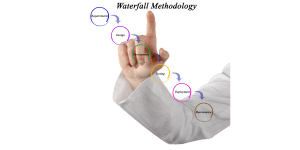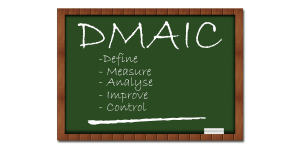
Image Source: FreeImages
Project management is a complex and dynamic process that requires the use of specific tools, techniques, and methodologies to ensure that projects are delivered on time, within budget, and to the satisfaction of all stakeholders. The process involves five stages, from initiation to closure, each presenting unique challenges and requiring specific skills to navigate effectively. In this article, we will explore the key aspects of each stage, including project initiation, planning, execution, monitoring and control, and closure. We will provide you with practical tips and best practices to help you navigate these stages smoothly and achieve your project goals. The Five Stages of Project Management
Stage 1: Initiation
The first stage of project management is initiation. This stage involves identifying the need for a project, defining its scope, and establishing its objectives. During the initiation stage, you need to answer several questions, such as what problem or opportunity the project is addressing, who the stakeholders are, and what the project’s goals are.
One of the crucial aspects of the initiation stage is to perform a feasibility study. A feasibility study is an assessment of the project’s viability, including its technical, financial, and operational aspects. The study helps you determine whether the project is worth pursuing and provides insights into the resources, budget, and timeframe required to complete it.
Stage 2: Planning
The planning stage is where you create a roadmap for your project. It involves defining project deliverables, determining the tasks required to complete them, and estimating the resources needed to accomplish those tasks. The planning stage also involves identifying potential risks, developing a risk management plan, and creating a project schedule.
One of the critical aspects of the planning stage is stakeholder management. Stakeholder management involves identifying and engaging all individuals or groups that have an interest in the project. By engaging stakeholders, you can gain their support and input, which can help you make informed decisions and avoid potential roadblocks.
Stage 3: Execution
The execution stage is where the rubber meets the road. It involves implementing your project plan and performing the tasks required to complete the project deliverables. During the execution stage, you need to monitor progress, manage resources, communicate with stakeholders, and ensure that the project stays on track.
One of the crucial aspects of the execution stage is team management. Team management involves managing the individuals working on the project, ensuring that they have the necessary resources and support to complete their tasks, and resolving any conflicts that may arise. Effective team management can help you keep the project on track, improve team morale, and ensure that everyone is working towards a common goal.
Stage 4: Monitoring and Control
The monitoring and control stage is where you track the project’s progress and performance against the project plan. This stage involves collecting data, analyzing it, and taking corrective action if necessary. During this stage, you need to ensure that the project is on track, within budget, and meeting the objectives set during the planning stage.
One of the critical aspects of the monitoring and control stage is risk management. Risk management involves identifying, assessing, and mitigating potential risks that may impact the project’s success. By monitoring and controlling risks, you can reduce the likelihood of negative impacts and ensure that the project stays on track.
Stage 5: Closure
The closure stage is where you wrap up the project and transition it to its final state. This stage involves completing the final deliverables, obtaining approvals, and conducting project reviews. During the closure stage, you need to ensure that all project documentation is complete, and deliverables have been accepted by the stakeholders.
One of the crucial aspects of the closure stage is knowledge transfer. Knowledge transfer involves sharing the project’s lessons learned with other teams, individuals, or organizations who may benefit from the project’s outcomes. By sharing knowledge, you can improve future projects and help others learn from your successes and failures.
Project Management Tools and Techniques
Project management involves the use of various tools and techniques to ensure that projects are delivered on time, within budget, and to the satisfaction of all stakeholders. Some of the most commonly used tools and techniques include:
- Project charter: a document that outlines the project’s scope, objectives, and stakeholders.
- Work breakdown structure: a hierarchical breakdown of project tasks and deliverables.
- Gantt chart: a visual representation of the project schedule.
- Risk management plan: a plan that outlines how to identify, assess, and mitigate potential risks.
- Project management software: software that helps manage tasks, resources, and schedules.
By using these tools and techniques, you can improve your project management skills and deliver successful projects.
Common Project Management Challenges and How to Overcome Them
Project management is not without its challenges. Some of the most common challenges include:
- Scope creep: when project scope expands beyond its original boundaries.
- Resource constraints: when there are not enough resources to complete the project.
- Communication breakdowns: when stakeholders are not kept informed or do not communicate effectively.
- Risk management: when risks are not identified or controlled effectively.
To overcome these challenges, you can take several steps, including:
- Setting clear project objectives and scope.
- Creating a risk management plan.
- Communicating regularly with stakeholders.
- Conducting regular project reviews.
The Importance of Effective Project Management
Effective project management is essential for organizations to achieve their goals and deliver successful projects. By using a structured approach to project management, organizations can improve their project success rates, reduce costs, and improve stakeholder satisfaction. Effective project management can also help organizations improve their competitive advantage and increase their overall success.
Conclusion
Project management is a complex and dynamic process that involves five stages, from initiation to closure. Each stage presents unique challenges and requires specific skills to navigate effectively. By using the tools, techniques, and best practices outlined in this article, you can improve your project management skills and deliver successful projects. Effective project management is essential for organizations to achieve their goals and deliver successful projects. By following the five stages of project management and using the right tools and techniques, you can achieve your project goals and deliver value to your stakeholders.











